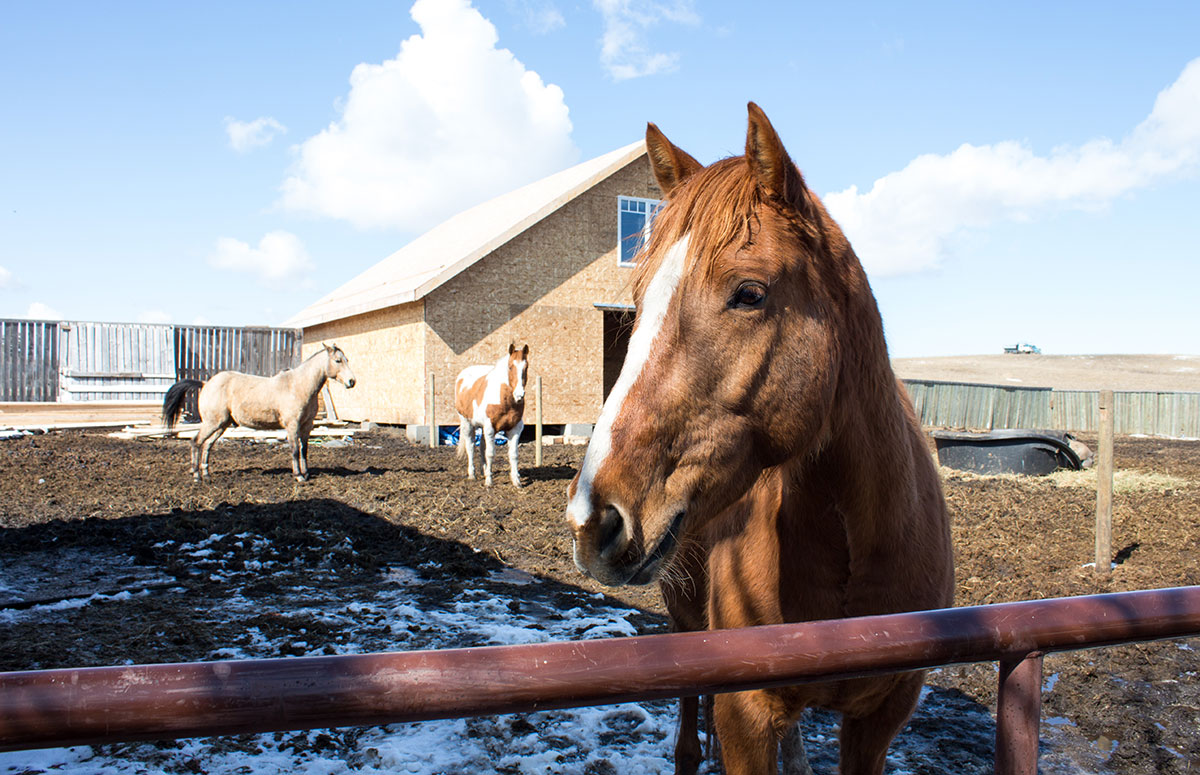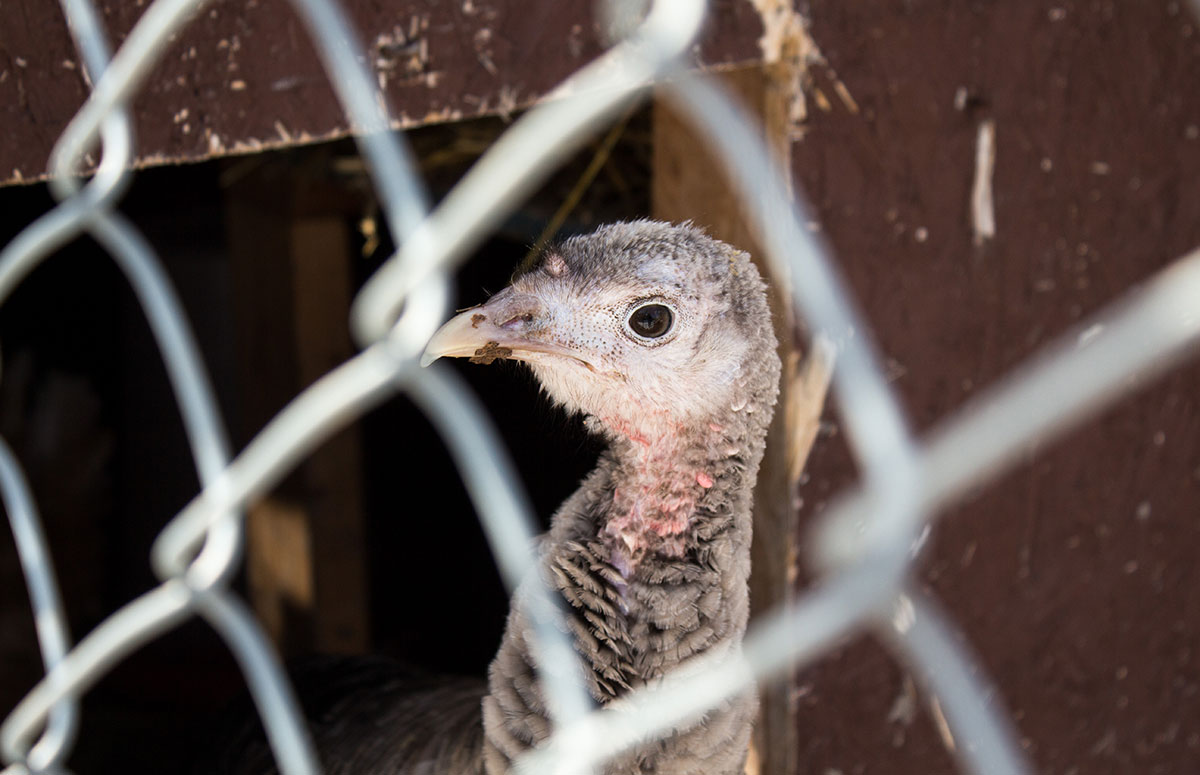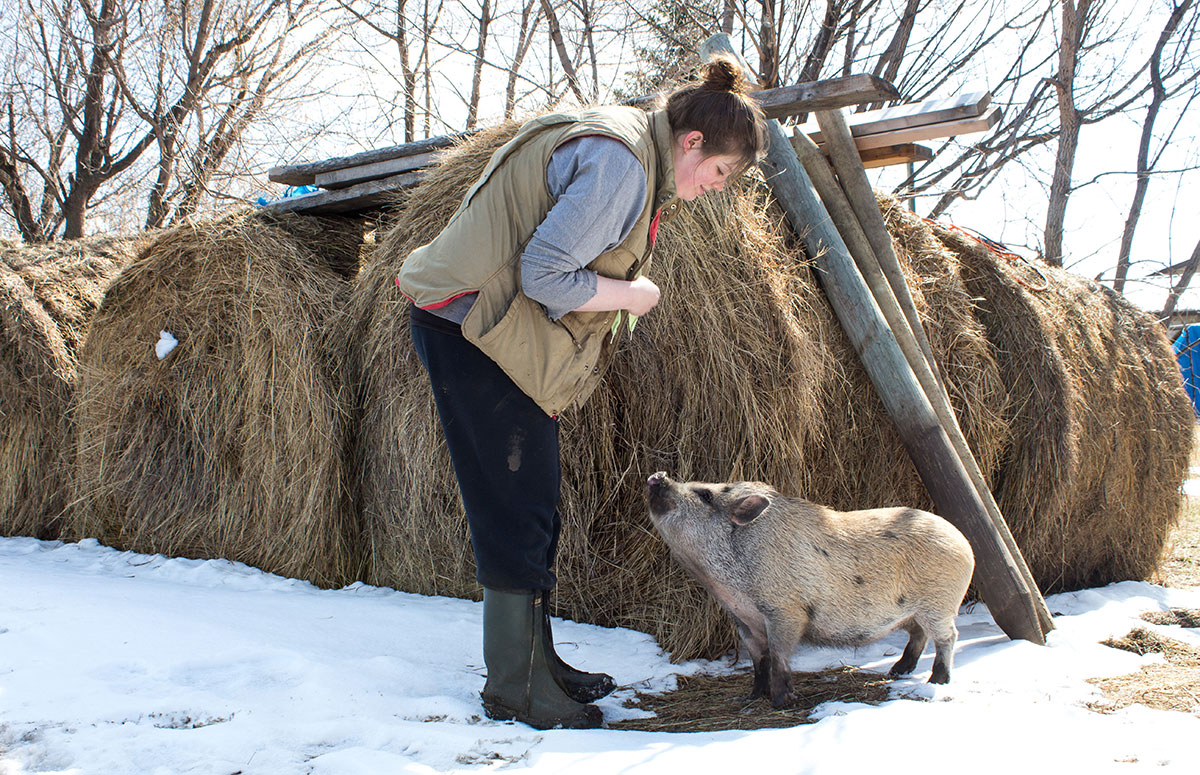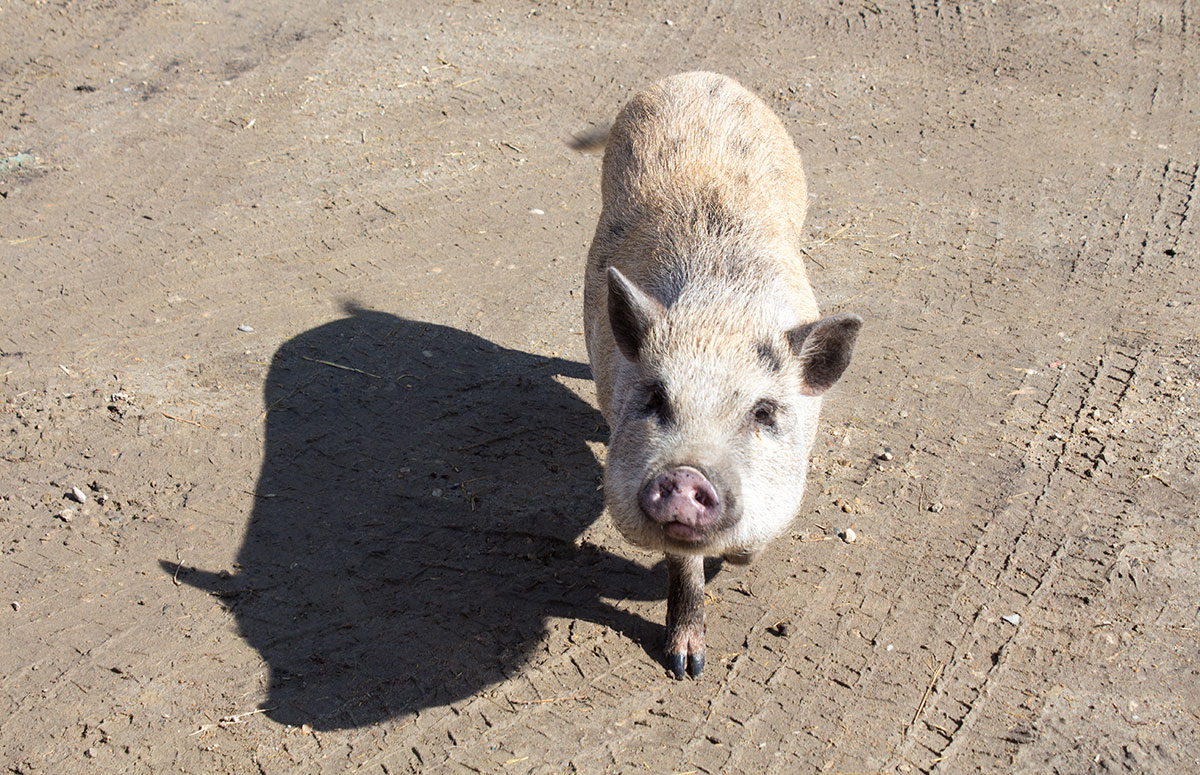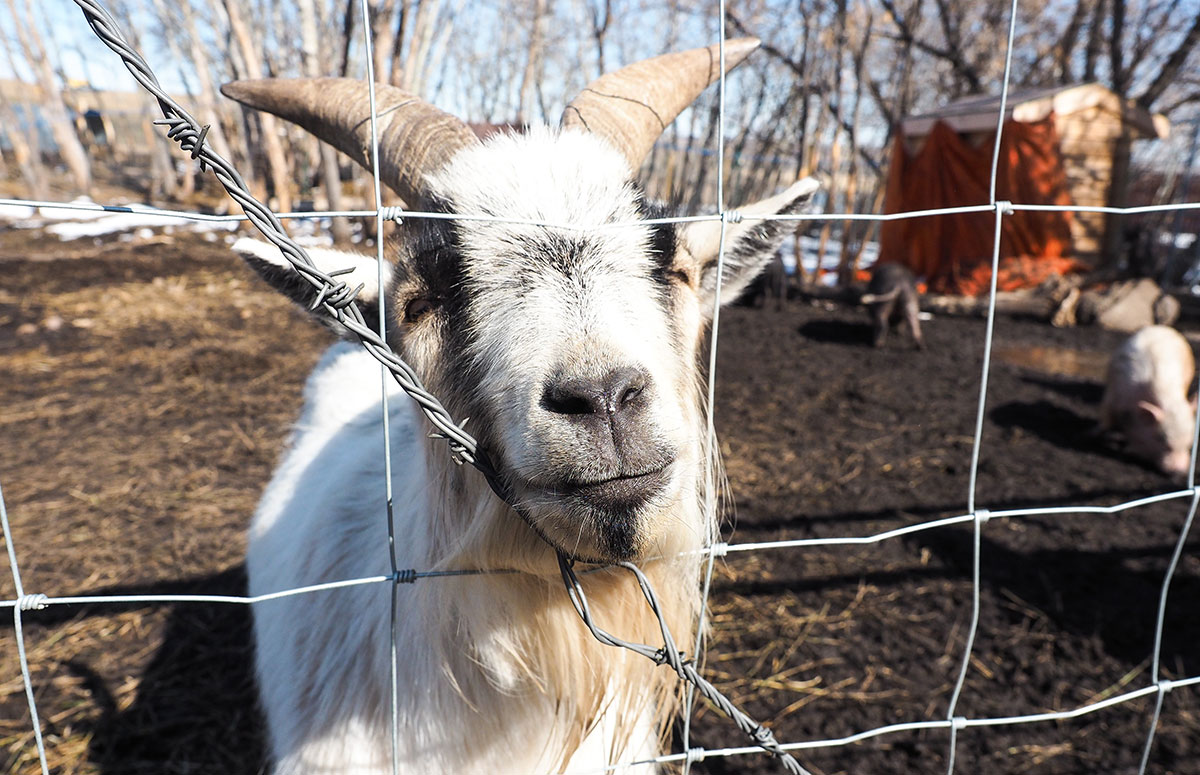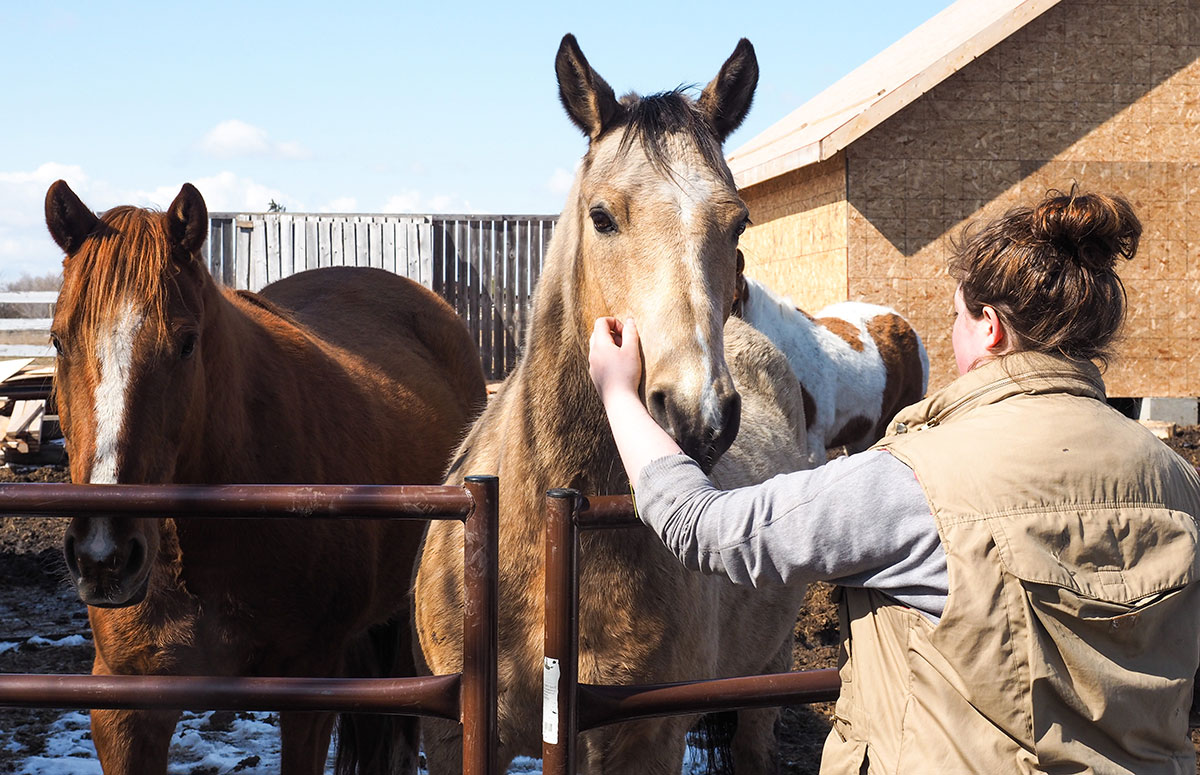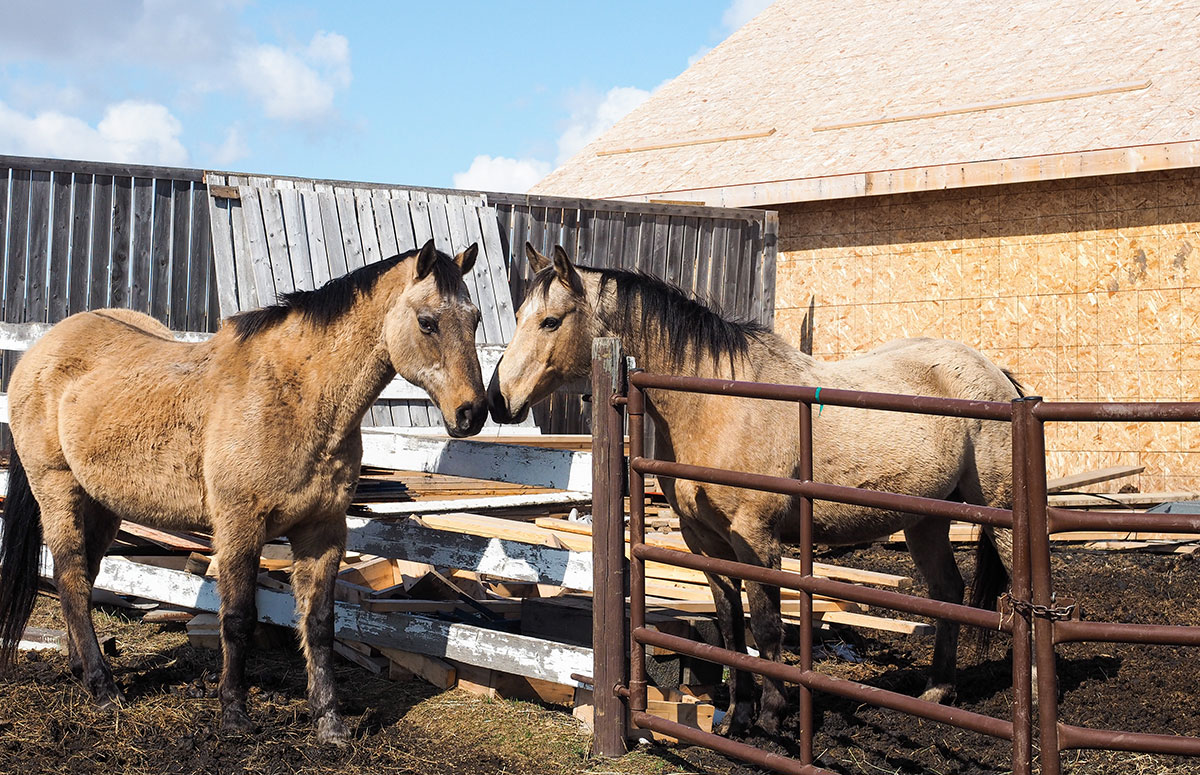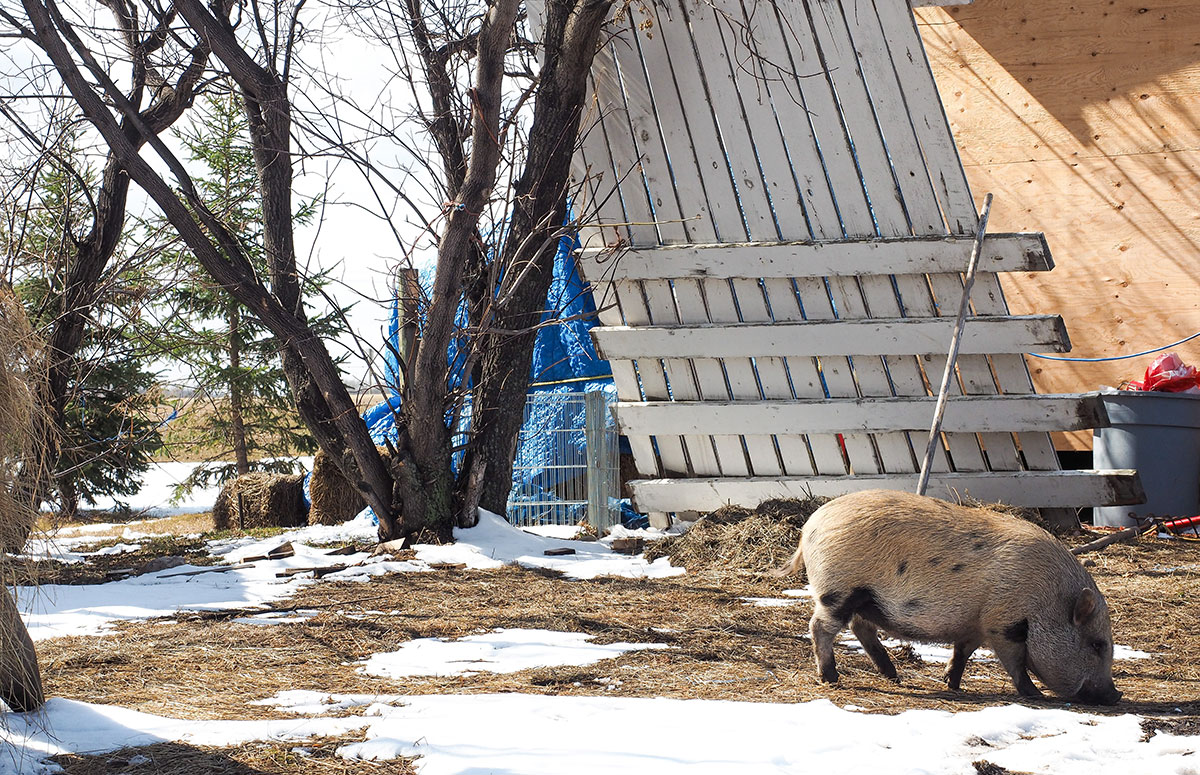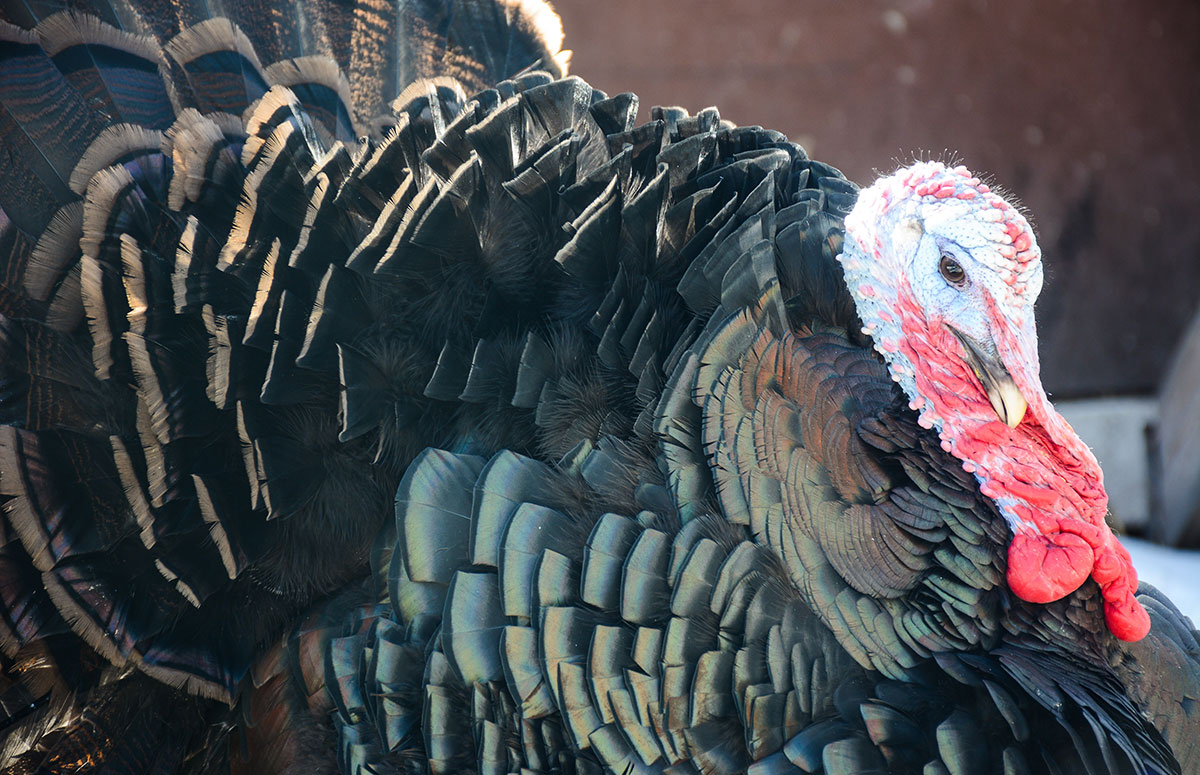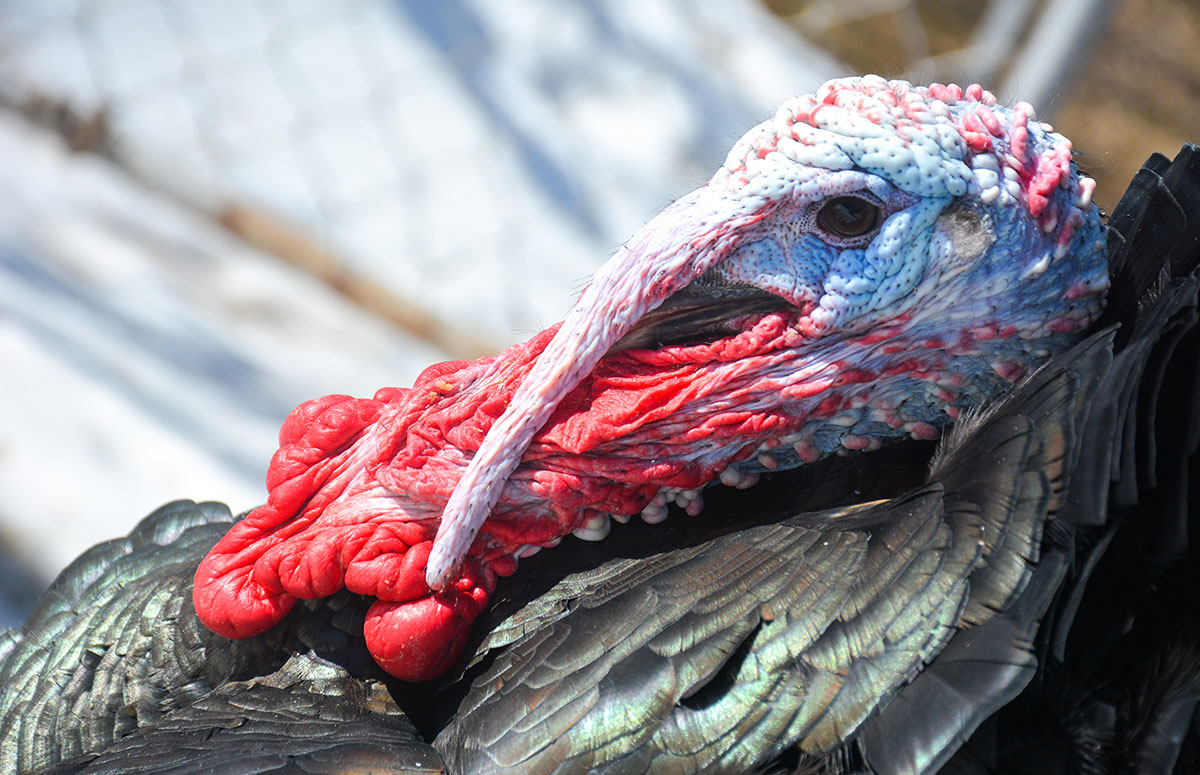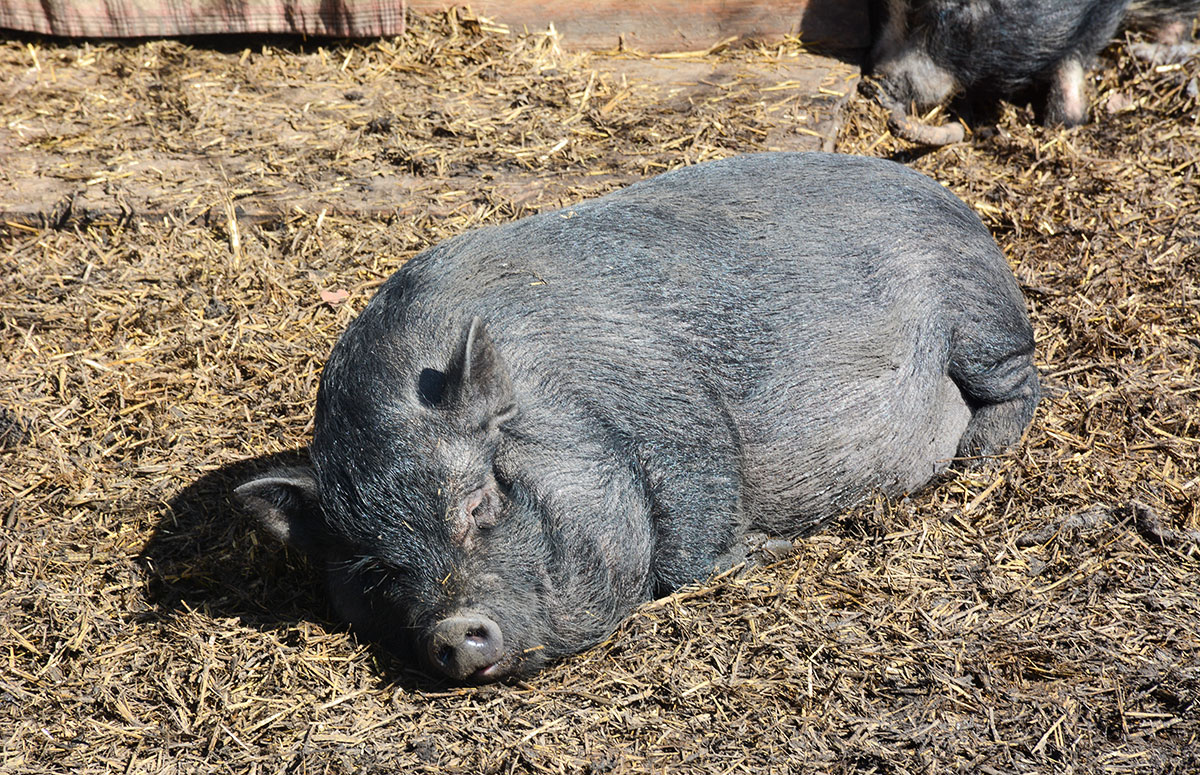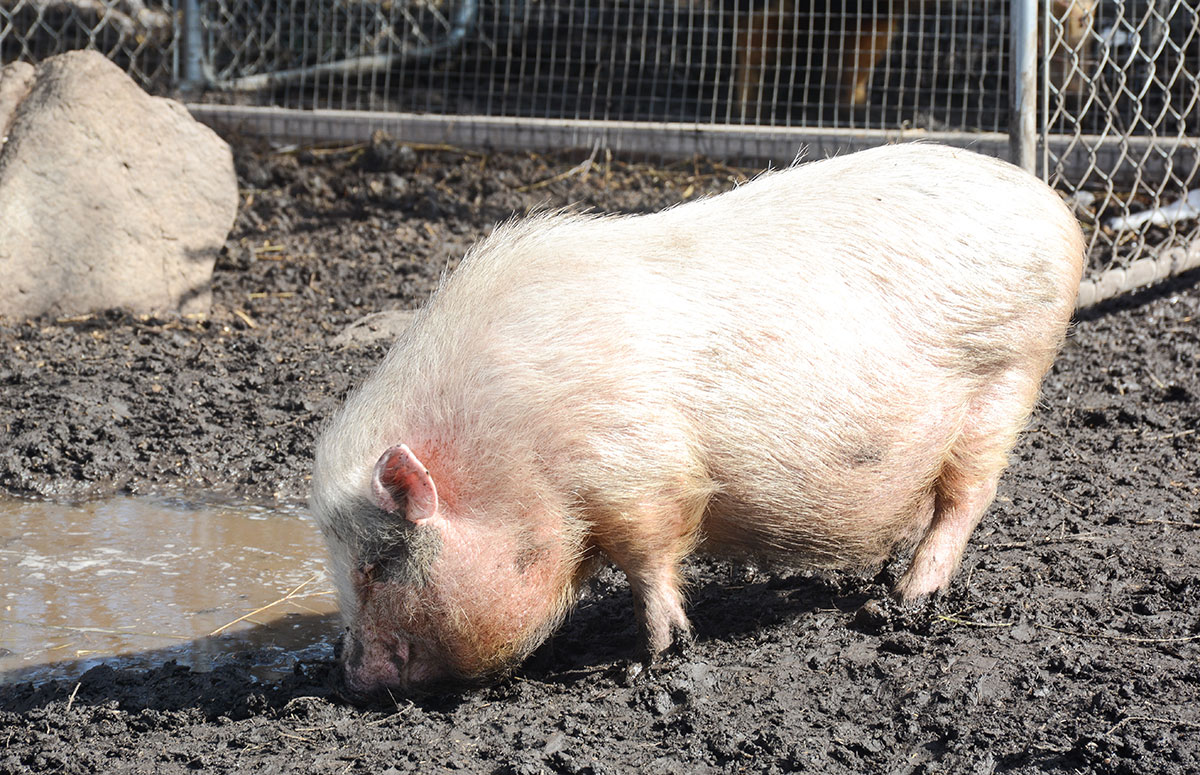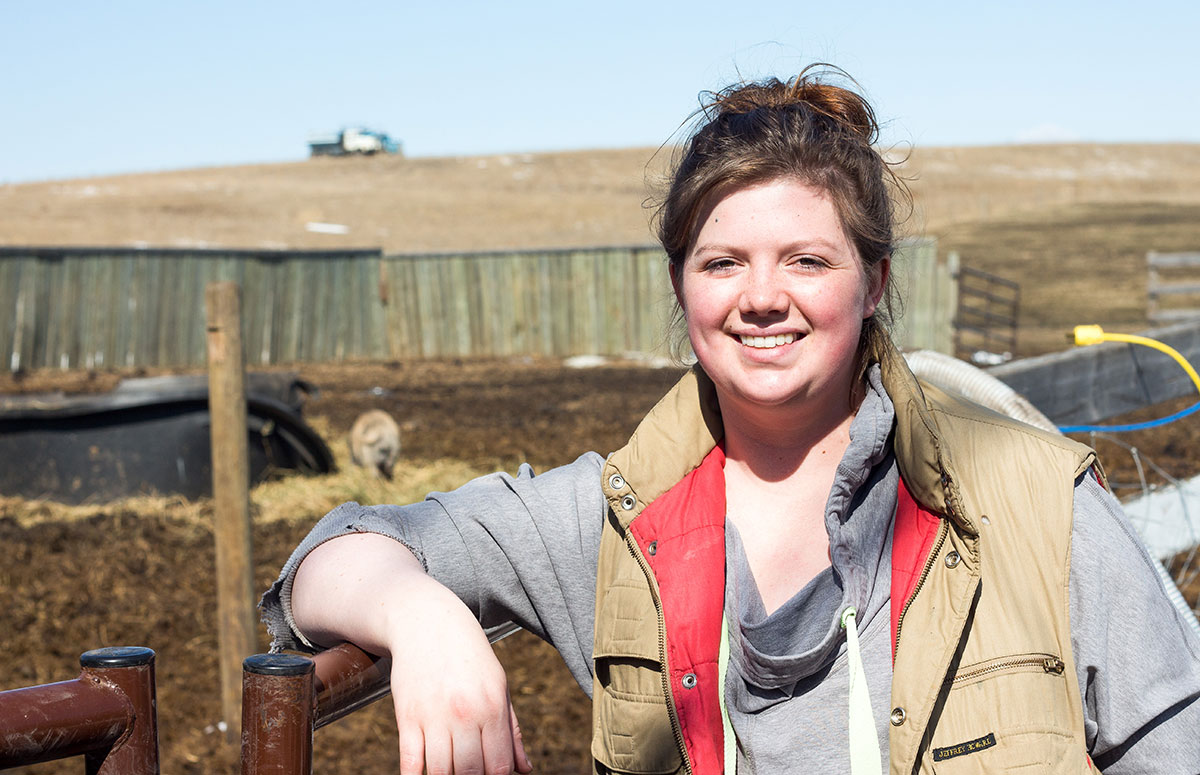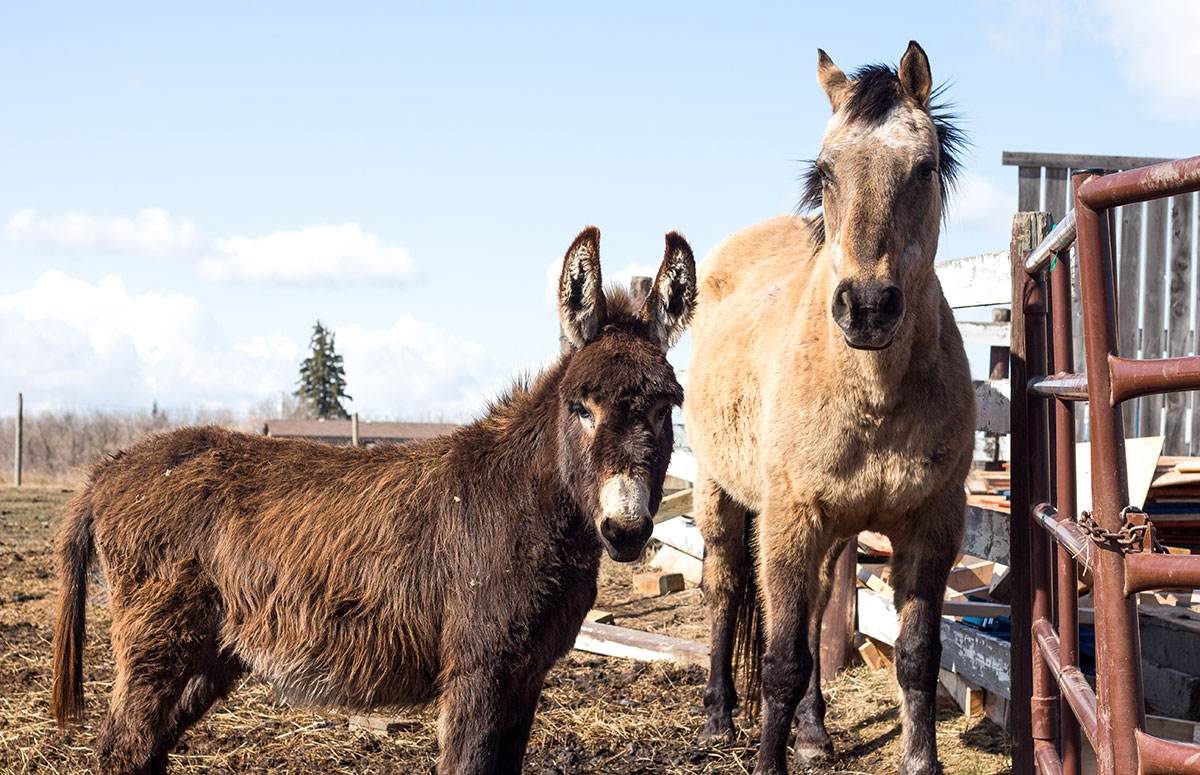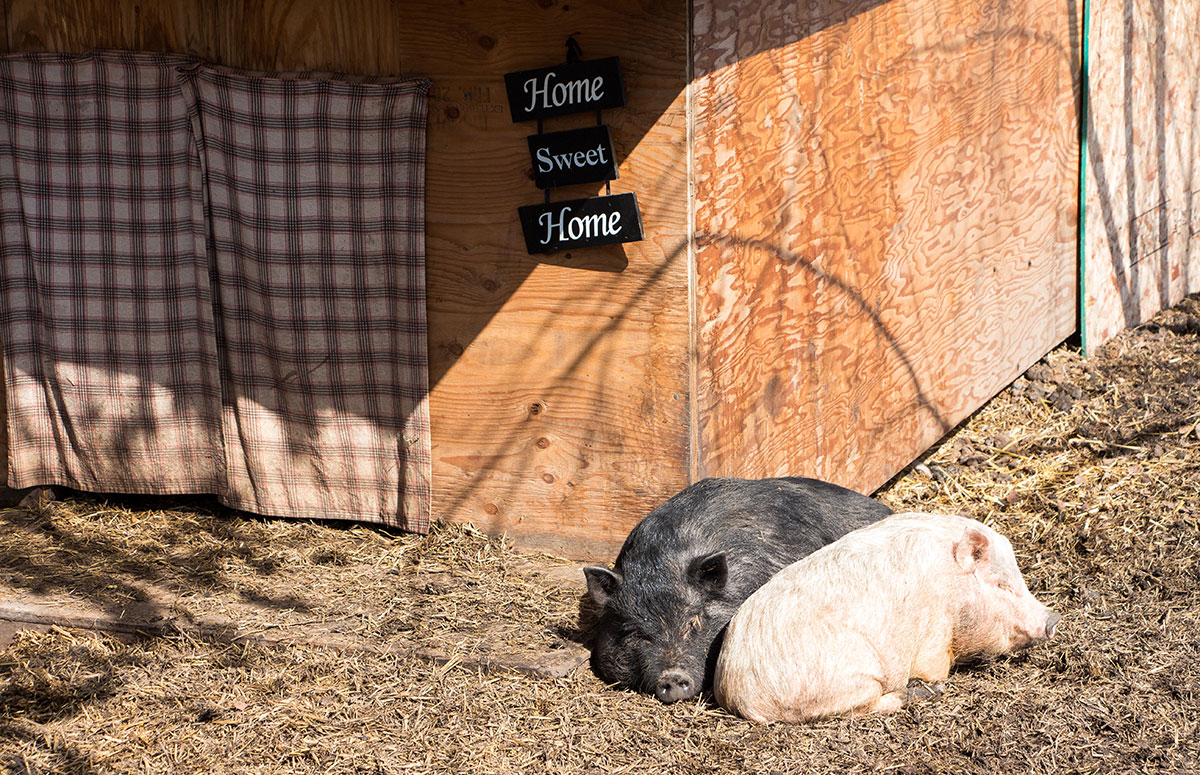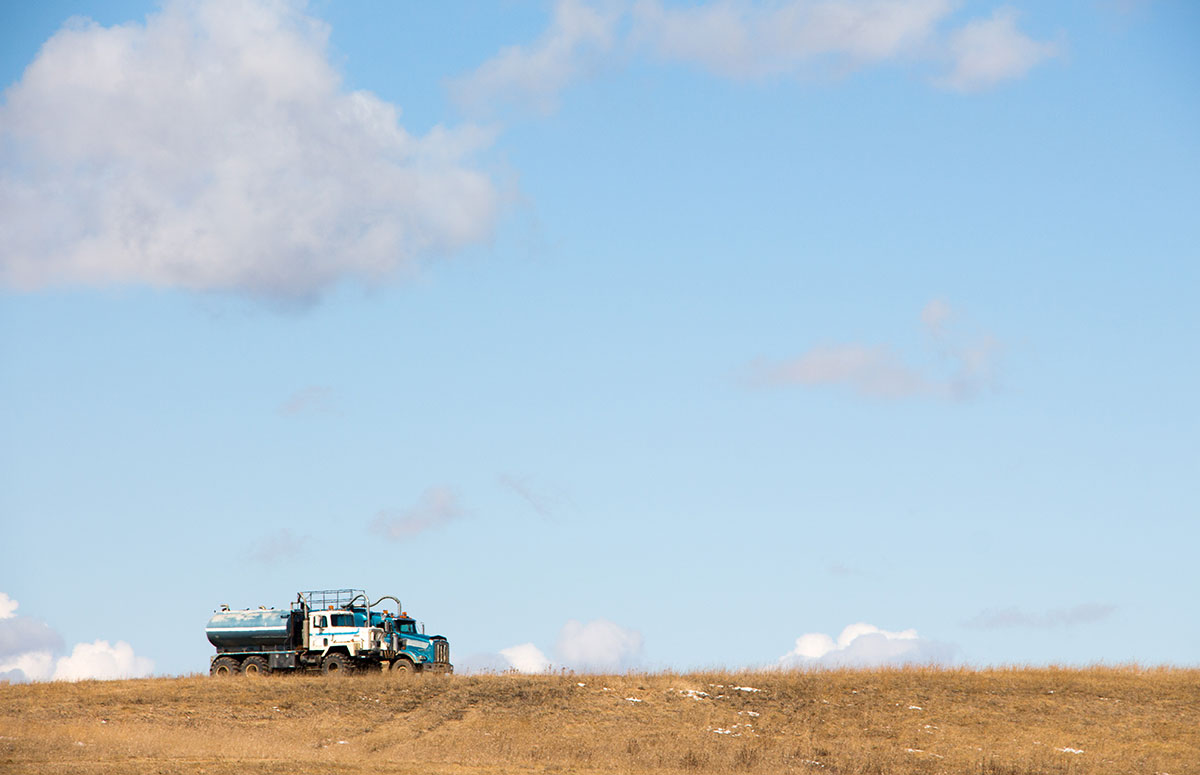Farm Sanctuary
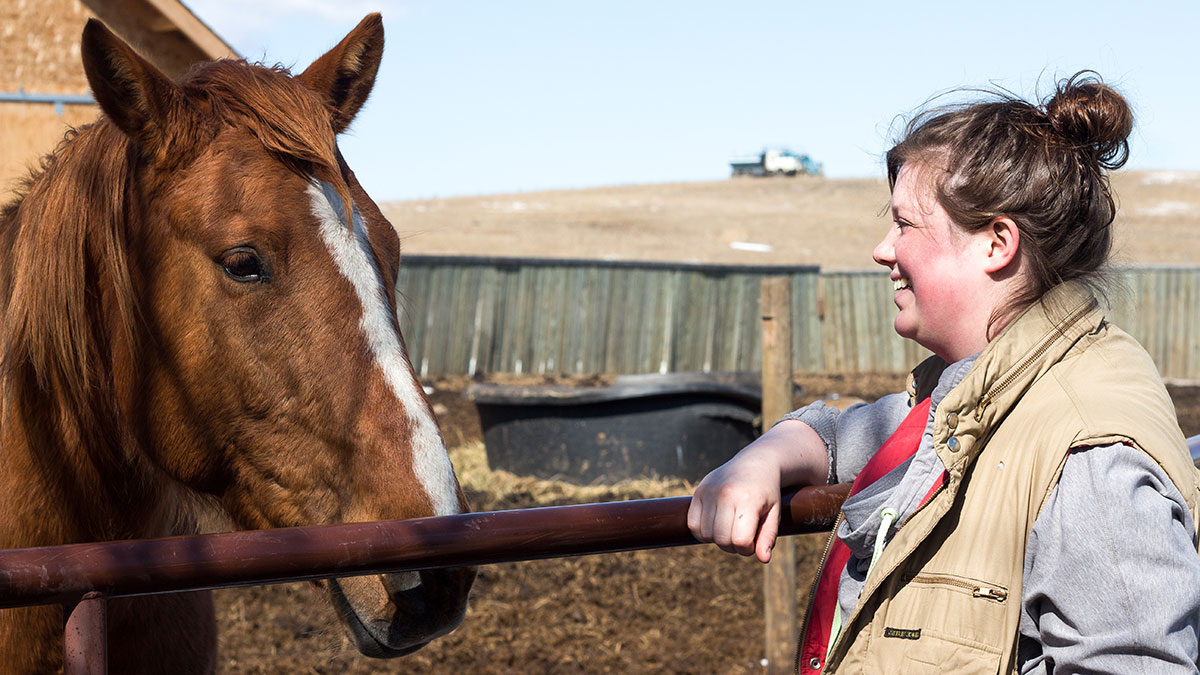 Spencer Nichols
Spencer NicholsWhen pigs are frightened, they will sometimes stick their heads in the corners of their pens.
That’s one of the facts you learn when you run a farm animal rescue sanctuary.
“It’s a defence mechanism,” explains Melissa Foley, the founder and head-operator of the Farm Animal Rescue and Rehoming Movement, or FARRM for short. “If they can’t see you, they can sometimes convince themselves that they’re hiding.”
She pauses for a moment, and then continues, blankly:
“Supposedly they advantage of this on factory farms and abattoirs. If they scare all the pigs into the corners, it’s a lot easier to grab them.”
If you’re coming from Edmonton, it’s about a 45-minute drive. On your way through Wetaskiwin, take a left at the Husky station and continue until you reach the gravel road.
Nestled between acres of small farms is the FARRM base. It’s a new operation, having started in 2014 as a project to rescue potbelly pigs from incompetent owners looking for a “fad pet.” But FARRM has since expanded, now providing shelter, food and medical attention to almost 60 creatures, including pigs, goats, horses and chickens, with more animals arriving on a regular basis.
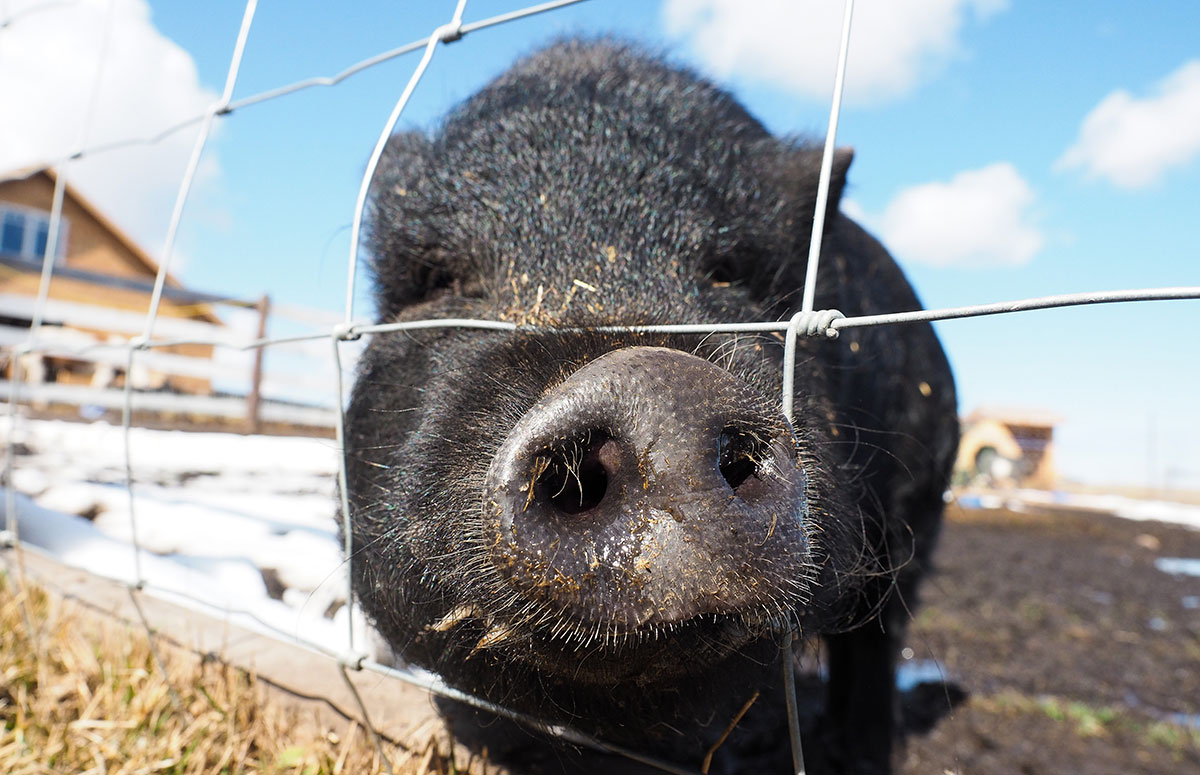
FARRM’s website lists their raison d’être as providing “care and space for the sick and injured as well as an adoptions centre open for people to visit who may be interested in providing a compassionate home for animals with a less than honourable history.”
Foley is a poster child for proactive compassion and justice for animals. Aside from working a full-time job, she and her fiancé are also the primary caregivers for the animals. Foley also finds space in her schedule to meet with guests and give informal tours of her property.
On a cold day, Foley will often bring her guests into the surprisingly comfortable pig shed, where they can watch the animals play, sleep and huddle together for warmth. As most people know, pigs are phenomenally diverse animals, both physically (FARRM houses several types of Sus domesticus, which vary greatly in shape, size, and colour), but also in terms of personality.
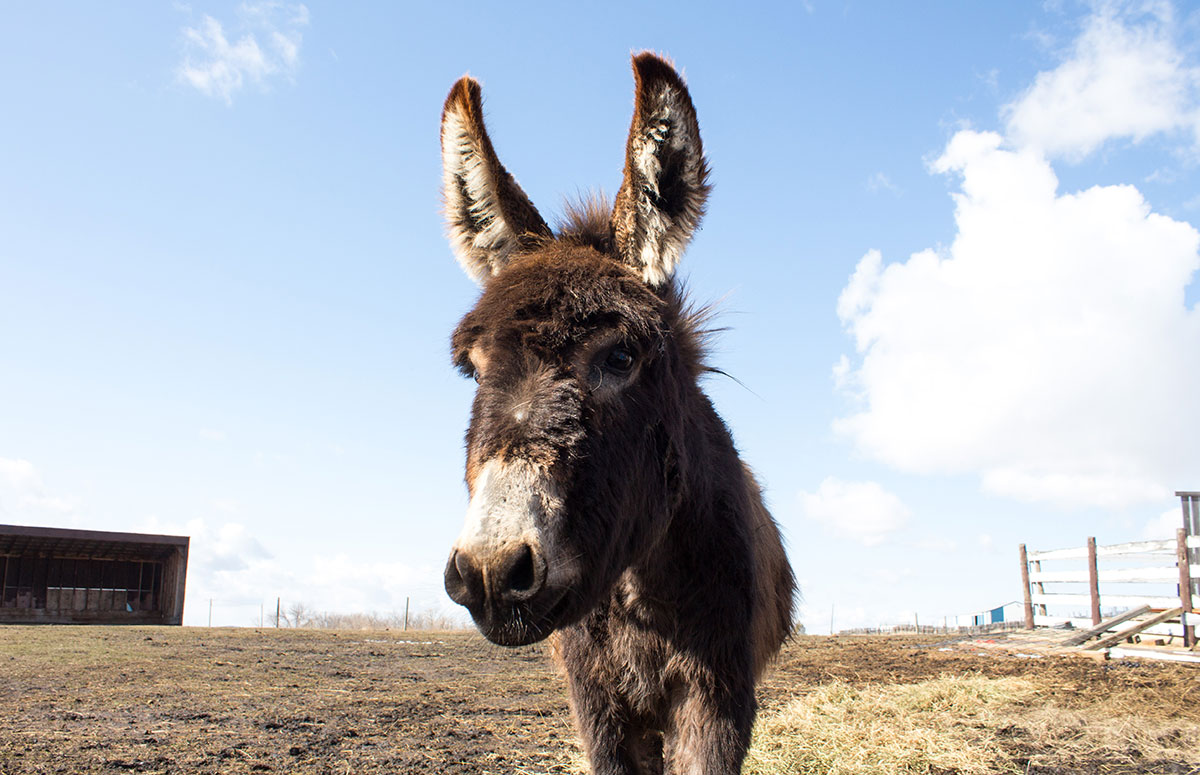
A guest on FARRM has the chance to watch many of these rescued animals first-hand, and the pigs are usually the first to greet them.
“We spread some coconut oil on Micky to help with a skin condition,” Foley explains as she watches the pigs leap over one another in hay. “But pigs love the smell of it, so we always have to stop some of the more boisterous ones from licking him clean.
“Don’t be surprised if some of the shyer ones linger in the back, though.”
But life on FARRM is far from lighthearted. Because it’s run entirely by volunteers and funded by donation, it depends on sympathy and generosity to keep things operating smoothly. Thus, creative solutions often take the place of proper infrastructure and investment, as Foley explained recently in an interview with Global News:
“We are literally every day in survival mode, as far as funds go,” she said. “Every shelter I have on my property that wasn’t meant to be a shelter has now been turned into a shelter for some animal in some way shape or form.”
The appearance on Global News resulted in a much-needed windfall of donations, but as with all not-for-profits, an influx of money is a temporary solution to immediate problems. The future remains uncertain, and FARRM is gearing up towards difficult times. Several barns must be built or repaired, fences need to be erected, trenches are yet to be dug, and a collapsed well forces Foley and any volunteers to haul water long distances with buckets.
Not to mention, abused animals continue to flow in, frequently battered, and often plagued by mental and physical illnesses — including, most recently, several birds suffering from contagious tuberculosis. On top of all of this, proper veterinary attention has become something of a Holy Grail.
Compared with organizations like the SPCA, which deal exclusively with house pets or wildlife, the hardships faced by FARRM are tremendous.
The question that inevitably arises, is why? The answer, it would seem, is social as much as it is economic.
Stephanie Belland, a MacEwan University student and long-time volunteer for FARRM, says social stigmas often exclude farm animals from activism’s eye.
“People don’t want to be impacted by these animals because they’re ‘farm animals’ or ‘livestock,’ and not ‘pets,’” she says.
An issue like farm animal rights, she suggests, is simply “not palatable in the same way zoo animal activism and fur animal activism are.”
The discrimination faced by farm animals manifests itself in several ways. Vets working in the cities are not allowed to provide treatment to livestock, but as for rural vets, it’s simply a matter of callousness, Belland says.
“(Rural vets) are usually reluctant to deal with animals on a small scale, unless it’s a matter that would affect business.”
This is especially true of chickens. Unless a suffering, diseased chicken is likely to infect the rest of the flock, and thus impact the livelihood of a farm, the doctor often won’t take the time to examine them.
“They simply don’t see them as individuals. The mentality among most rural vets is that animals like this are not worth the cost of saving them,” Belland says.
Belland’s particular interest in hens stems from an incident at a farm animal auction in rural Alberta last spring.
When Belland went to explore the back of the building where the auction was taking place, she discovered a group of hens that had been discarded alive. Their bodies were still crammed into small battery cages: a standard practice in commercial agriculture.
“We’re fairly certain that these birds were once battery-hens because some of them had been de-beaked, and one of them had suffered a dislocated rib,” Belland recalls.
The commercial chicken industry would inoculate this phrase and call these birds “layers.” In either case, they were too diseased and emaciated to raise any money, and so were left to starve to death in the trash heaps.
These hens were rescued, and promptly given some much-needed care. But stories like this rarely have happy endings.
Like many factory-farmed animals, she explains, these were “genetically engineered birds.” They were deliberately bred to lay copious amounts of eggs, which puts tremendous stress on their bodies, leading to burn out after a few years. Most of them have already died, and now there are six left, suffering from varying degrees of tuberculosis.
These hens’ situations are far from extraordinary.
All the denizens of FARRM have a story behind them, some more heinous than others.
There is a horse named Jax, who was beaten so viciously that he sucked in his cheeks from stress (as many horses do when they experienced trauma), leaving permanent divots in his face.
Then there are the piglets whose mother had been shot by a farmer who mistook her motherly instinct for unmediated aggression. When the piglets were found, they were still trying to suckle their mother’s corpse.
The list goes on.
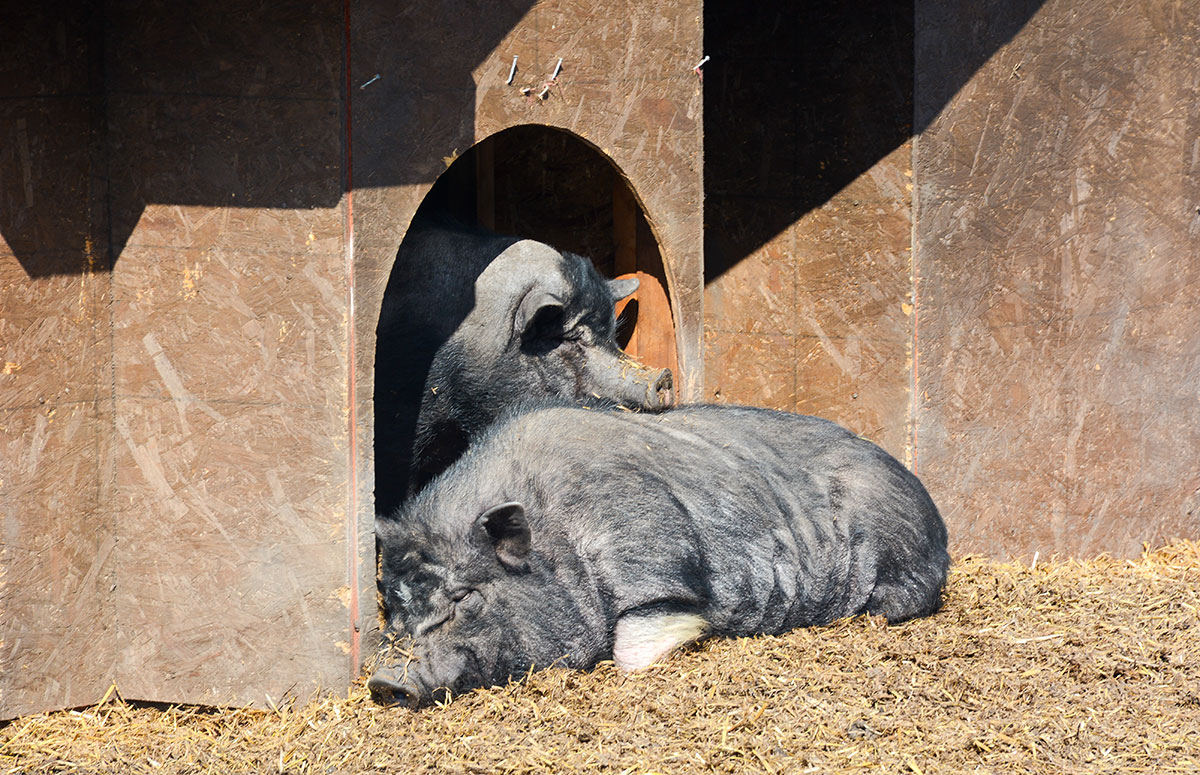
A possible reason for this treatment of livestock animals has to do with the way people are alienated from their food in a high-consumption society. This is especially true of animal products, and although the stories of these individual animals of FARRM may be touching, they are a drop in the ocean compared to the number of farm animals living exploited lives all across North America.
To put things into perspective, U.S.-based meta-charity Animal Charity Evaluators has calculated that “(for) every one dog or cat euthanized in a shelter, about 360 farm animals are confined and slaughtered.” In 2013, this amounted to 274 chickens killed per second in the United States alone, as well as 13 other farm animals. The numbers in Canada are almost exactly proportional to our population, despite all stereotypes about Canadians being “kinder” towards other creatures.
And as Animal Charity Evaluators points out, the amount of money being donated to organizations
that focus on farm animals is incredibly inconsistent with the amount of animals being systematically annihilated by commercial farming.
The vast majority of donations, it seems, continue to flow to pet animal sanctuaries and campaigns against vivisection and commercial animal testing.
With hardly enough space for the animals they have, FARRM could hardly hope to take in the 650 million animals killed for food every year in Canada alone, the vast majority of which were raised on factory farms.
FARRM’s website presents their mission statement, an impassioned display of their founding ethics and goals. Considering the tremendous destruction of farm animal life in North America today, the first line sticks out the most: “Together we hope to create a world where we are no longer needed.”
With enough dedication from its founders and enough generosity from volunteers and donors, they might one day gain enough steam to give farm animal sanctuaries their proper reputation as movements for greater justice and fairer treatment.
In the meanwhile, FARRM remains a rare testament to the power of compassion to take a stand against the exploitation of the most vulnerable
creatures.
“When it comes down to it, FARRM is about supporting a movement of compassion,” Foley says. “If one animal can make an impact on a few people, and they decide to join the cause and talk about it with their friends, then the movement
can grow.
“Even one animal can cause a lot of change.”
